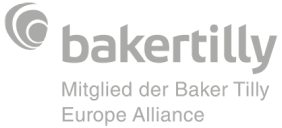28. April 2025
Reading Time: 4
Min.
news
Digitization in Finance and Accounting: Between Compliance Re-quirement and Strategic Opportunity
The introduction of mandatory systems in Romania, such as e-Invoice (e-Factura) and SAF-T reporting, has made it clear that the shift towards digitalization can no longer be delayed. Today, the lack of digital tools means not just delays and errors, but also higher costs, difficulties in dealing with tax authorities requirements, and risks of penalties that could seriously impact business stability, according to TPA Romania experts — a leading company in Central and Eastern Europe specializing in accounting, tax, audit, and legal advisory services.
“The rollout of e-Invoice accelerated the digital transformation process, pushing companies to adopt digital solutions for issuing and managing invoices. While this move was essential for increasing fiscal transparency and reducing tax evasion, it posed challenges for smaller businesses that had to quickly invest in technology and adjust their budgets. Today, operating a company without digitalized accounting processes is increasingly difficult, affecting competitiveness and operational efficiency — and more importantly, incurring additional costs in responding to tax authority queries or even fines due to reporting errors,” explains Maria Junghiatu, Partner at TPA Romania.
Digital Investments: From Necessity to Opportunity
The level of investment in digital accounting solutions depends on company size and operational complexity. Small businesses may start with a €1,000–2,000 budget for accounting software and staff training, while larger companies may invest tens of thousands of euros in integrated, customized systems.
“In the financial-accounting field, digitization can be both a legal obligation and a strategic choice. For large companies, where data volumes and process complexity demand efficient solutions, it is a necessity for compliance and performance. For small and medium-sized businesses, however, digitalization is an opportunity to optimize processes and save resources through scalable digital solutions,” adds Maria Junghiatu.
Key Challenges in the Digital Journey
According to TPA Romania specialists, companies face several hurdles on the path to digitalization: high initial costs, employee resistance to change, lack of internal expertise, and difficulties integrating new systems with legacy ones. “Challenges are even greater for foreign companies with operations in Romania, due to local fiscal requirements like SAF-T and e-Invoice reporting, which are broader and more detailed than in other countries. This explains why tax reporting costs can be higher here,” notes Maria Junghiatu.
Industries Most Impacted by Digital Transformation
Industries handling large data volumes and strict regulatory requirements are most impacted.
“The financial and banking sector, for example, must comply with complex regulations and reporting standards, making advanced digital solutions critical. Retail and e-commerce also rely on digitalized processes to enhance customer experiences and ensure compliance. Similarly, the highly regulated energy sector requires specialized technological solutions. Meanwhile, sectors like agriculture and construction experience a slower pace of digitalization, largely due to the nature of their activities and limited technological infrastructure,” highlights Maria Junghiatu.
The Role of Digitalization in Ensuring Tax Compliance
In today’s strict fiscal environment, digitalization plays a vital role in ensuring compliance and reducing the risk of penalties. For example, SAF-T (Standard Audit File for Tax) reporting, mandatory in Romania, requires the use of advanced digital tools to generate and transmit data in a standardized OECD format.
Automation improves data collection and processing accuracy, minimizes non-compliance risks, and helps companies meet deadlines and maintain transparency in their dealings with authorities — safeguarding them from fines or sanctions that could disrupt operations.
New Technologies Driving the Change
Technologies such as Robotic Process Automation (RPA) are already widely used to automate repetitive tasks like account reconciliations, report generation, and invoice management.
Companies today use a broad range of digital solutions, from simple automation tools to complex systems based on artificial intelligence (AI), depending on process complexity and allocated budgets. In many cases, these solutions are separate from the core accounting software, creating an additional need for integration, according to TPA Romania specialists.
Emerging Trends: AI, Blockchain, and Advanced Automation
The future of finance and accounting lies in adopting emerging technologies like AI, blockchain, and advanced automation.
AI enables predictive analytics and the automation of complex processes, helping reduce errors and improve decision-making. Blockchain offers unparalleled transparency and data security, increasingly used in audits and tax compliance. Advanced automation via RPA simplifies repetitive tasks and enhances operational efficiency.
“To remain competitive, companies need to invest in technology infrastructure, prioritize employee training, and collaborate with experts to seamlessly integrate new tools. These technologies go beyond process optimization — they are fundamentally changing the way companies operate, moving from manual, time-consuming tasks to fast, efficient, and secure digital workflows. In the long run, this leads to fewer errors, higher productivity, and better data accessibility, making digital transformation a key driver of operational success, not just a passing trend. Digitalization is here to stay and to transform our environment.” concludes Maria Junghiatu.







